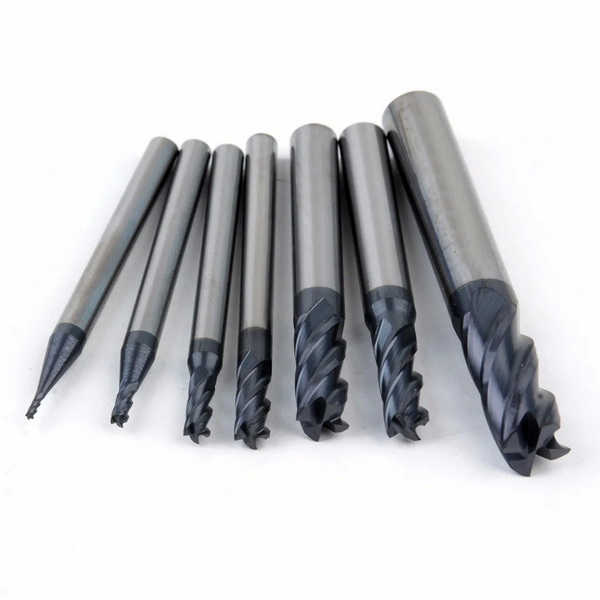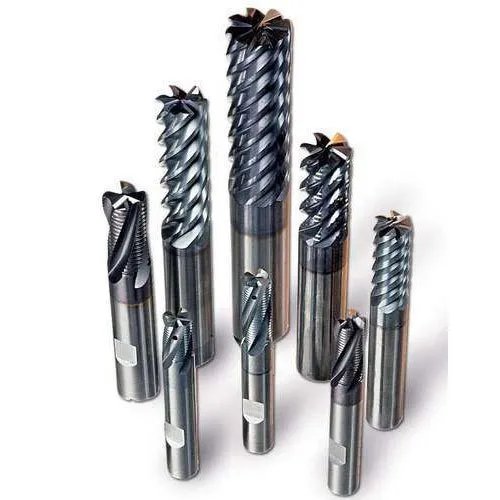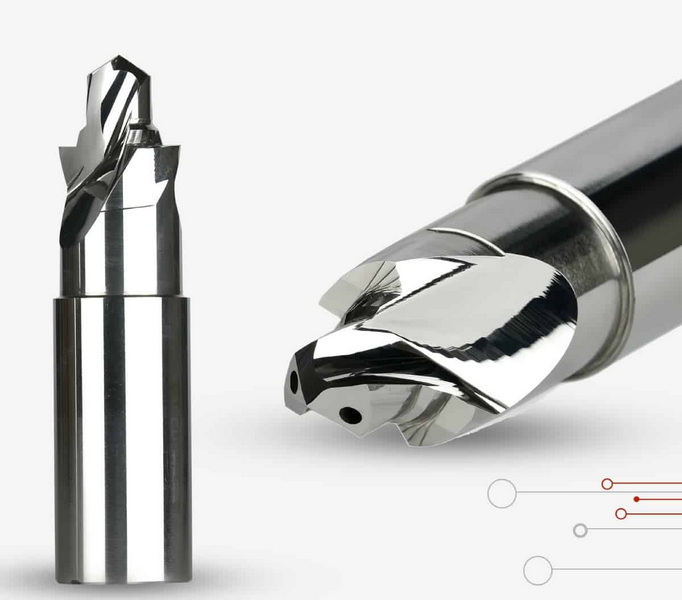Content Menu
● Introduction to Tungsten Carbide Cutters
● Methods for Sharpening Tungsten Carbide Cutters
>> 1. Diamond Grinding Wheels
>> 2. Silicon Carbide Grinding Wheels
>> 3. Electrical Discharge Machining (EDM)
>> 4. Laser Sharpening
● Factors to Consider When Sharpening Tungsten Carbide Cutters
>> 1. Cooling
>> 2. Proper Angle
>> 3. Sharpening Frequency
>> 4. Quality of Sharpening Tools
>> 5. Safety Precautions
● Advanced Techniques for Complex Geometries
>> EDM for Complex Designs
>> Laser Sharpening for High Precision
● Cost Considerations
● Conclusion
● FAQs
>> 1. What is the best method for sharpening tungsten carbide cutters?
>> 2. Can silicon carbide wheels be used for sharpening tungsten carbide?
>> 3. What are the benefits of using EDM for sharpening tungsten carbide?
>> 4. How does laser sharpening compare to traditional grinding methods?
>> 5. Why is cooling important during the sharpening process?
● Citations:
Tungsten carbide cutters are renowned for their exceptional hardness and durability, making them indispensable in various industrial applications. However, like all cutting tools, they eventually become dull and require sharpening to maintain optimal performance. Sharpening tungsten carbide cutters involves specialized techniques and tools due to their hardness. In this article, we will explore the best methods for sharpening tungsten carbide cutters, including the use of diamond grinding wheels, silicon carbide wheels, Electrical Discharge Machining (EDM), and laser sharpening.

Introduction to Tungsten Carbide Cutters
Tungsten carbide is one of the hardest materials used in modern industry, known for its high hardness, wear resistance, corrosion resistance, and strength. These properties make tungsten carbide cutters ideal for precision cutting tasks in industries such as manufacturing, woodworking, and metalworking. Despite their durability, tungsten carbide cutters will eventually dull and need sharpening to maintain their cutting efficiency.
Methods for Sharpening Tungsten Carbide Cutters
1. Diamond Grinding Wheels
Diamond grinding wheels are the most effective tool for sharpening tungsten carbide cutters. Diamond is one of the few materials harder than tungsten carbide, allowing it to grind and restore the blade's edge with minimal wear to the grinding tool.
Benefits:
- High Precision: Diamond grinding wheels provide excellent control, maintaining the sharpness and angle of the blade's cutting edge.
- Long-Lasting: Diamond grinding wheels are extremely durable and can be used repeatedly without noticeable wear.
- Fast Process: Sharpening with diamond grinding wheels is efficient and effective, restoring sharpness quickly.
2. Silicon Carbide Grinding Wheels
Silicon carbide grinding wheels are a more affordable alternative to diamond wheels. Although they are less effective for regular, heavy-duty sharpening of tungsten carbide, they can be used for lighter or occasional sharpening needs.
Benefits:
- Affordable: Silicon carbide wheels are more cost-effective than diamond wheels.
- Accessible: They are widely available and suitable for occasional sharpening tasks.
3. Electrical Discharge Machining (EDM)
EDM is an advanced technique that uses electrical discharges to erode material from the blade's surface. This method is ideal for sharpening intricate and complex blade designs without applying mechanical force.
Benefits:
- High Precision: EDM is capable of extremely fine sharpening, making it ideal for blades requiring intricate geometries or tight tolerances.
- No Mechanical Stress: Unlike grinding, EDM does not apply physical force to the blade, reducing the risk of deformation or damage.
4. Laser Sharpening
Laser sharpening uses focused laser beams to sharpen tungsten carbide cutters. This process is highly accurate and non-contact, eliminating the risk of mechanical wear.
Benefits:
- Extreme Precision: Laser sharpening can restore blades to their original sharpness with a high level of accuracy, even for blades with complex edges.
- No Physical Wear: Because there is no contact between the laser and the blade, there is no risk of physical wear or damage.
- Quick Process: Laser sharpening can be faster than traditional grinding methods, making it suitable for high-production environments.

Factors to Consider When Sharpening Tungsten Carbide Cutters
1. Cooling
Overheating is a significant risk when sharpening tungsten carbide. Using a coolant is essential to keep the blade at a safe temperature and prevent microcracks that could compromise its durability.
2. Proper Angle
Maintaining the correct sharpening angle is crucial for achieving a sharp edge while preserving the blade's original geometry. Using a guide can help ensure precision.
3. Sharpening Frequency
Regular maintenance is key. Don't wait until the blade becomes completely dull before sharpening, as this can reduce efficiency and lead to more frequent replacements.
4. Quality of Sharpening Tools
High-quality diamond or silicon carbide grinding wheels are necessary for sharpening tungsten carbide cutters effectively. Using the wrong abrasive can lead to poor results and potentially damage the blade.
5. Safety Precautions
Always wear protective gear, including gloves and safety glasses, when sharpening to prevent injury from flying particles or electrical discharges.
Advanced Techniques for Complex Geometries
For blades with intricate designs or complex geometries, EDM and laser sharpening offer superior precision and control. These methods allow for the sharpening of blades that would be difficult or impossible to sharpen using traditional grinding techniques.
EDM for Complex Designs
EDM is particularly useful for sharpening blades with tight tolerances or delicate features. It ensures that the sharpening process does not alter the blade's geometry, maintaining its precision and functionality.
Laser Sharpening for High Precision
Laser sharpening provides a non-contact method that can achieve extremely fine details without applying mechanical stress. This makes it ideal for blades that require high precision and cannot tolerate any deformation.
Cost Considerations
When choosing a sharpening method, cost is an important factor. Diamond grinding wheels, while effective, are more expensive than silicon carbide wheels. EDM and laser sharpening are advanced techniques that require specialized equipment, making them more costly upfront. However, they offer long-term benefits in terms of precision and reduced wear on the blade.
Conclusion
Sharpening tungsten carbide cutters is a critical task for maintaining their performance and extending their lifespan. The choice of sharpening method depends on the specific requirements of the blade and the available resources. Diamond grinding wheels offer the best balance of precision and durability, while EDM and laser sharpening provide advanced solutions for complex geometries. Regular sharpening and proper maintenance are essential to ensure that tungsten carbide cutters continue to perform optimally.

FAQs
1. What is the best method for sharpening tungsten carbide cutters?
The best method for sharpening tungsten carbide cutters is using diamond grinding wheels due to their hardness and precision.
2. Can silicon carbide wheels be used for sharpening tungsten carbide?
Yes, silicon carbide wheels can be used for sharpening tungsten carbide, but they are less effective and wear down faster than diamond wheels.
3. What are the benefits of using EDM for sharpening tungsten carbide?
EDM offers high precision and does not apply mechanical stress to the blade, making it ideal for complex geometries and delicate blades.
4. How does laser sharpening compare to traditional grinding methods?
Laser sharpening is highly precise, non-contact, and can be faster than traditional grinding methods, making it suitable for high-production environments.
5. Why is cooling important during the sharpening process?
Cooling is essential to prevent overheating, which can cause microcracks and compromise the durability of the tungsten carbide cutter.
Citations:
[1] https://passionblade.com/what-is-the-best-way-to-sharpen-tungsten-carbide-blade/
[2] https://www.youtube.com/watch?v=kUOuAPimjP4
[3] https://www.linkedin.com/pulse/how-sharpen-tungsten-carbide-shijin-lei
[4] https://www.indiamart.com/proddetail/tungsten-carbide-blade-cutter-sharpening-machine-15124294562.html
[5] https://www.reddit.com/r/sharpening/comments/1g6gq3h/how_to_sharpen_tungsten_carbide_cutting_tools/
[6] https://www.shutterstock.com/search/tungsten-carbide
[7] https://www.youtube.com/watch?v=9V7t_uy9QY8
[8] https://www.pinterest.com/pin/tungsten-carbide-sharpening-easy-knife-sharpener--101049585383959069/
















